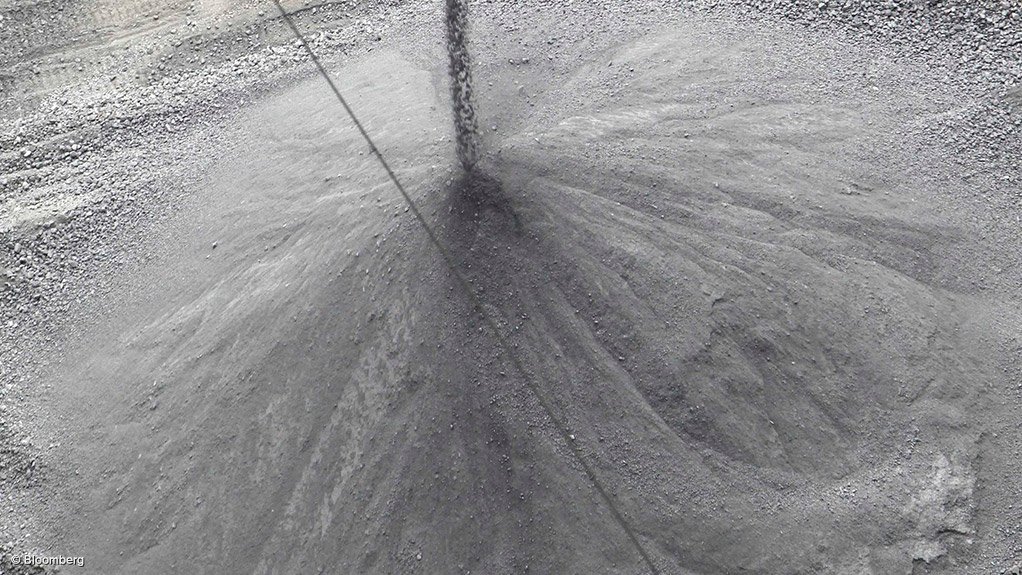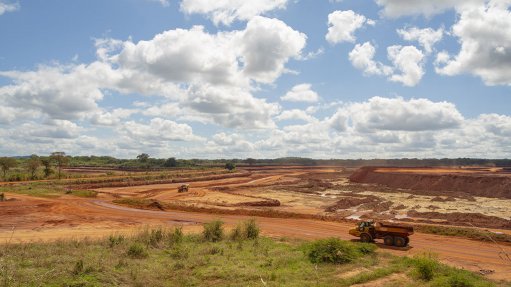Automation can help mines deal with high production costs


HIGH PRICE TO PAY Mining companies are under pressure to reduce production costs, as a result of dropping raw materials prices
Photo by Bloomberg
Mine operators worldwide are under severe pressure to reduce production costs, as a result of dropping prices in the raw materials industry, including the coal, iron-ore, copper and gold sectors, says mining information technology products and traffic telematics company PSI Mines&Roads.
Company MD Dr Marcus Adams says, in an attempt to reduce costs, mining companies are striving for a higher level of automation, noting that this is the right direction to take, from a safety point of view as well.
He, however, says automation on its own is not sufficient as mines also need to achieve a high level of transparency.
PSI Mines&Roads’ system, PSImining, supports the goals of a digital mine in respect of supervision, control, automation, optimisation and workforce management (WFM). It combines high-level supervisory control and data acquisition (Scada) functions with manufacturing execution systems (MES) functions for planning and management tasks, says Adams.
“The reasons for this are at least twofold: increasing automation will produce more data, which may contribute to more information for improving mine operation. And, as a consequence of the higher data volume, there is also a need to handle all data, which comes along with production. In other words – in future, production has to be able to handle Big Data.”
Adams further states that PSImining’s digital mine concept is in line with the current innovation trajectory referred to as ‘Industry 4.0’, in Europe, ‘Internet of Things’, in the US and ‘Made in China 2025’, in China.
Industry 4.0 is a collective term embracing a number of contemporary automation, data exchange and manufacturing technologies.
The Internet of Things is the network of physical objects embedded with electronics, software, sensors, and network connectivity, which enable these objects to collect and exchange data.
Made in China 2025 is an initiative to comprehensively upgrade the Chinese industry. The initiative’s guiding principles are to have manufacturing be innovation-driven, emphasise quality over quantity, achieve green development, optimise the structure of China’s industry, and nurture human talent.
Minewide Contribution to Cost Reduction
One of the main objectives when introducing the digital-mine concept is the improvement of automation and optimisation potentials, in addition to increasing the level of automation.
Adams says the reasons for improvements are obvious when reflecting the main feature of the digital factory – which is to consider the mine as an entity.
Automation and the related data restricted to a machine or equipment will only achieve limited results unless they belong to a collection of “data islands”. A Level-3 Scada collects such information from all systems involved in a mine operation and provides automation and optimisation functions from a higher level.
PSImining can include geographical/geological information into automation strategies. Further, MES and WFM functions are an integral part of PSImining, especially focusing on maintenance and production.
Adams says selected aspects of automation and optimisation potentials include direction control of mining machines, automatic speed control by reflecting local or superior preconditions, and collision detection and prevention.
When it comes to product flow optimisation, the selected aspects of automation and optimisation potentials include the adaptation of conveyor speed to the prevailing belt load, continuous product flow, delivering the required material quality and quantity and contributions to improved equipment planning and layout.
As far as the coordination and optimisation of production resources is concerned, the selected aspects of automation and optimisation potentials include electrical energy management, controlling water infrastructure (fresh- and wastewater), coordinating material logistics for tunnelling and material transportation scheduling and load optimisation.
When it comes to workforce management and the reduction of personnel in dangerous areas, the selected aspects of automation and optimisation potentials include operation planning and management, maintenance of mine equipment, machines and infrastructure and the production of a dynamic production schedule.
Mine-Operation Management
Adams says, with the integration of all “data islands” into a Level-3 Scada, the machine- related visualisation systems will be focused to do parametrisation and maintenance work on those machines.
Since all data that is relevant for the Level-3 supervision and automation will be available in one system, it is advisable that information generated out of this data is made available in one place.
The information formerly distributed across several monitors can now be available in one system and in one place. This place will be the central control centre (CCC), and it will not only be the place for the mine operation but will also be the place for production engineering of a mine, or several mines.
Tasks related to supervision, control and management of one or more mines can be performed in the CCC. They include supervision and control of all equipment and process values, supervision and control of conveyors, belts and bunkers, and infrastructure monitoring including the electrical network, water drainage and pressured air.
The tasks that can be performed in the CCC also include people and vehicle tracking, safety and ventilation management, mine security and detection of dangerous gases, video integration and event-driven video control for operator support.
These also include standstill monitoring for machinery and transportation equipment and the production of large geographical overview pictures to relate the geographical location with the machinery, people, supply material and maintenance material.
Adams says the availability of information in one system allows a flexible layout of the CCC according to the main needs of the mining company.
Comments
Press Office
Announcements
What's On
Subscribe to improve your user experience...
Option 1 (equivalent of R125 a month):
Receive a weekly copy of Creamer Media's Engineering News & Mining Weekly magazine
(print copy for those in South Africa and e-magazine for those outside of South Africa)
Receive daily email newsletters
Access to full search results
Access archive of magazine back copies
Access to Projects in Progress
Access to ONE Research Report of your choice in PDF format
Option 2 (equivalent of R375 a month):
All benefits from Option 1
PLUS
Access to Creamer Media's Research Channel Africa for ALL Research Reports, in PDF format, on various industrial and mining sectors
including Electricity; Water; Energy Transition; Hydrogen; Roads, Rail and Ports; Coal; Gold; Platinum; Battery Metals; etc.
Already a subscriber?
Forgotten your password?
Receive weekly copy of Creamer Media's Engineering News & Mining Weekly magazine (print copy for those in South Africa and e-magazine for those outside of South Africa)
➕
Recieve daily email newsletters
➕
Access to full search results
➕
Access archive of magazine back copies
➕
Access to Projects in Progress
➕
Access to ONE Research Report of your choice in PDF format
RESEARCH CHANNEL AFRICA
R4500 (equivalent of R375 a month)
SUBSCRIBEAll benefits from Option 1
➕
Access to Creamer Media's Research Channel Africa for ALL Research Reports on various industrial and mining sectors, in PDF format, including on:
Electricity
➕
Water
➕
Energy Transition
➕
Hydrogen
➕
Roads, Rail and Ports
➕
Coal
➕
Gold
➕
Platinum
➕
Battery Metals
➕
etc.
Receive all benefits from Option 1 or Option 2 delivered to numerous people at your company
➕
Multiple User names and Passwords for simultaneous log-ins
➕
Intranet integration access to all in your organisation


















